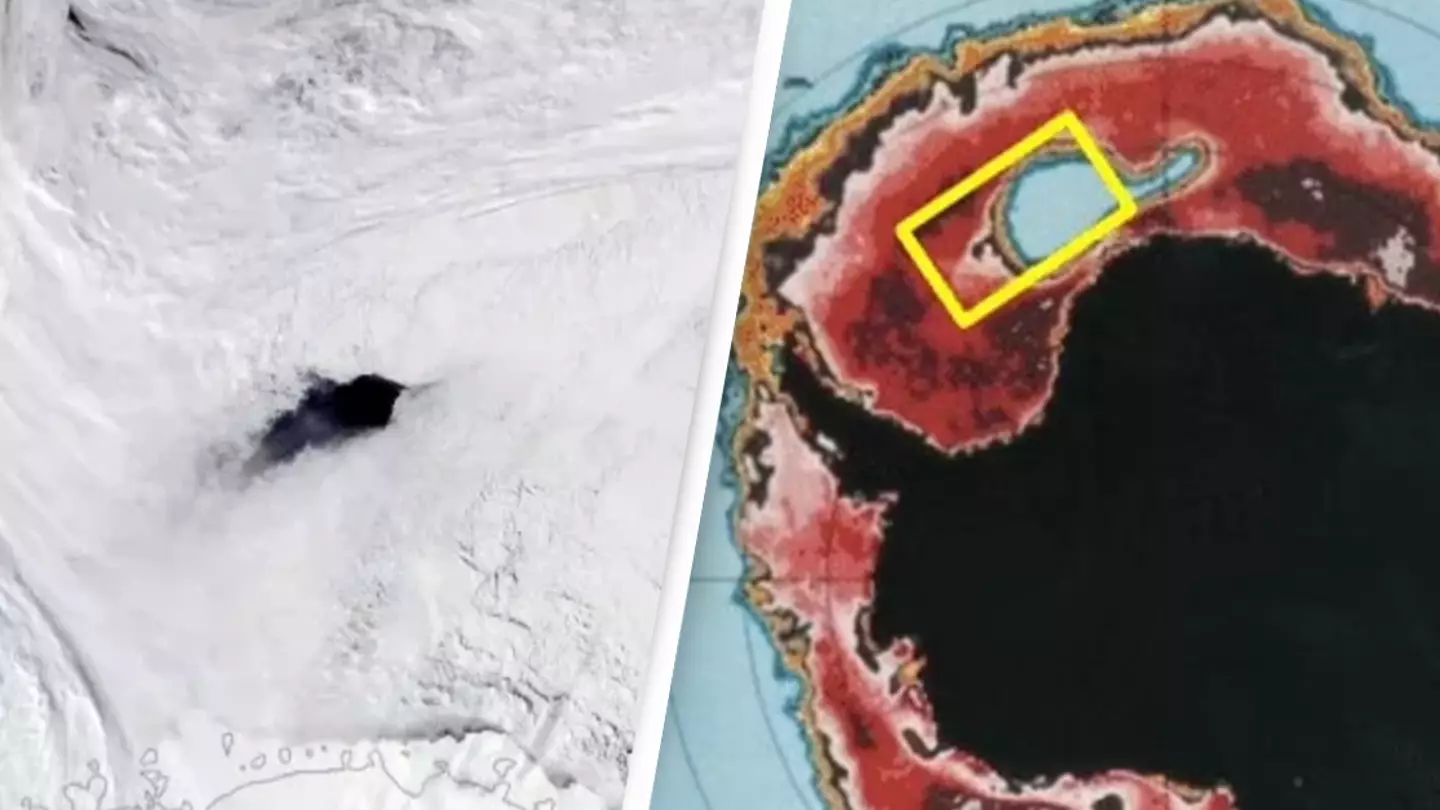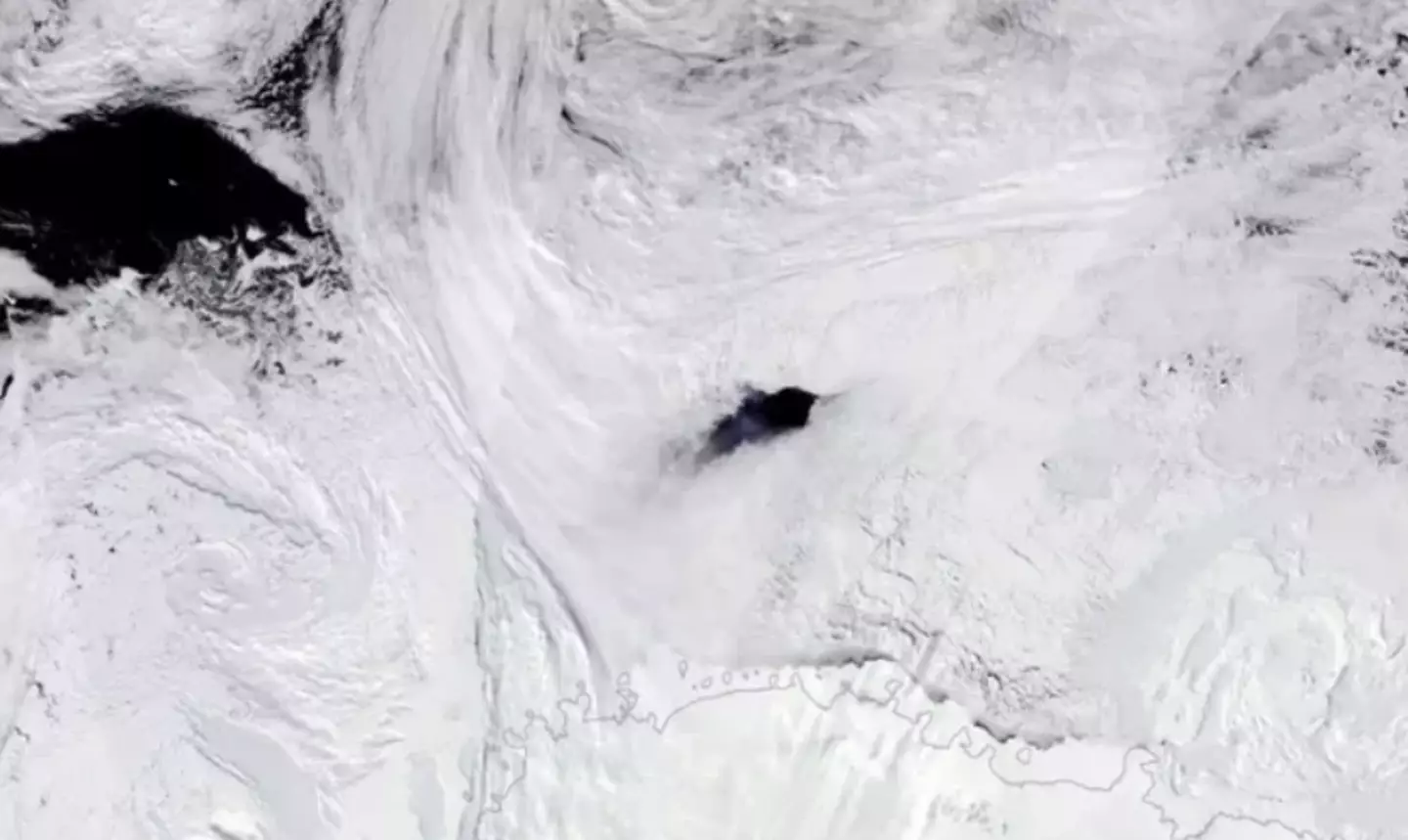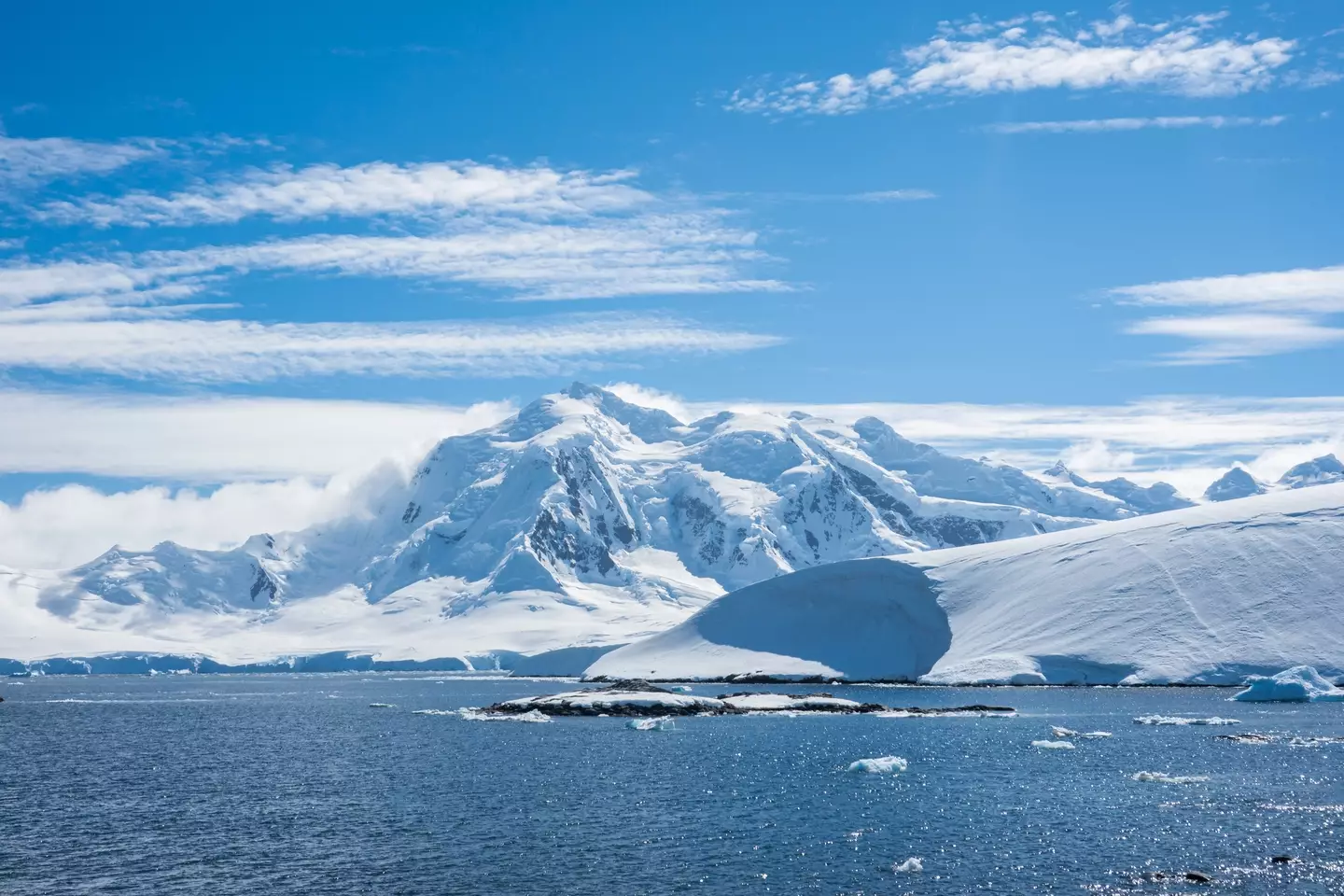
There aren't many places on Earth which elicit intrigue and fascination quite like Antarctica.
The icy continent is mysterious to us, and with no permanent citizens, scientists are left to observe it.
Whether it was the emergence of a 'pyramid' from beneath the ice or 'bleeding waterfalls', there's always something there catching the interest of science boffins.
Advert
But there's one thing that's left the the scientific community scratching their heads for nearly a decade - a massive hole which formed in 2016.
When it first appeared in the ice of the Wendell Sea, nobody had an explanation for it, especially because of its sheer size and distance from the coast.
But a new study may be solved the mystery.
Advert
First, let me just illustrate to you how big this hole is. It's the size of Switzerland, so pretty big.
Anyhow, it's what's known as polynya, defined as areas of open water appearing within sea ice. So a hole in ice, in layman terms.
This hole, named the Maud Rise Polynya, was the biggest on record in four decades.
It was initially believed that it had formed due to the impacts of a storm and unexpected ocean conditions.

However, research published in Science Advances has suggested that it came about as the result of a specific current.
Advert
The current, known as the Weddell Gyre, brought warm and salty water to the surface after strong currents between 2015 and 2018.
Professor Fabien Roquet from the University of Gothenburg explained: "This upwelling helps to explain how the sea ice might melt. But as sea ice melts this leads to a freshening of the surface water, which should in turn put a stop to the mixing.
"So, another process must be happening for the polynya to persist. There must be an additional input of salt from somewhere."
Professor Sarah Gille of the University of California San Diego also said: "The imprint of polynyas can remain in the water for multiple years after they’ve formed.

"They can change how water moves around and how currents carry heat towards the continent. The dense waters that form here can spread across the global ocean."
Advert
So there you have it.
There's a perfectly reasonable explanation related to the nuanced science of water and currents.
Conspiracy theories about alien activity and ancient civilisations can safely be put aside.
Topics: Science, World News, Environment
